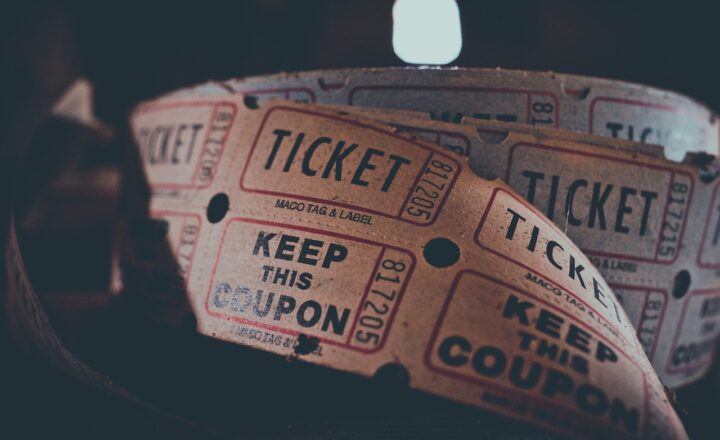From Ouija Boards to Spirit Boxes: Strange Devices That Claimed to Communicate with the Dead
November 15, 2024

Communication with the dead has fascinated humanity for centuries, inspiring countless tales, legends, and devices designed to bridge the divide between the living and the deceased. From the infamous Ouija board to modern-day spirit boxes, this article explores the intriguing world of spiritual communication tools, their historical contexts, and the cultural phenomena surrounding them.
1. The Ouija Board: A Window to the Beyond
The Ouija board, often regarded as the quintessential tool for spirit communication, was popularized in the late 19th century during the Spiritualist movement. It consists of a flat board marked with letters, numbers, and other symbols, along with a planchette that participants use to spell out messages.
The board garnered both fervent followers and harsh critics. Proponents believed that it allowed individuals to connect with spirits who could provide valuable guidance and insights about life and the afterlife. Skeptics, however, argued that the movements of the planchette can be attributed to the ideomotor effect, wherein subconscious movements affect the outcomes.
Despite the skepticism, the Ouija board became a staple at social gatherings and remained significant in various cultures. Many believe it provides a means of empowerment, where participants can explore the unknown and confront their fears about death and the afterlife.
2. The Historical Roots of Spiritual Communication Devices
The fascination with communicating with spirits can be traced back to ancient civilizations. The Greeks and Romans used animal sacrifices and rituals to seek guidance from the divine. In ancient China, the practice of “Fu” involved using divination to communicate with ancestors.
Throughout history, numerous gadgets emerged as people attempted to connect with spirits:
- Table-Turning: In the 19th century, table-turning sessions gained popularity. Participants would place their hands on a table and wait for it to move in response to the presence of spirits.
- Seances: Seances became a formal method for communicating with spirits, often led by a medium. Objects such as pendulums and crystals were frequently used to facilitate interactions with the deceased.
- Spirit Photography: In the late 1800s, spirit photography captured images of supposed spirits alongside the living, blurring the lines of reality and illusion.
These methods paved the way for more advanced devices, reflecting society’s ongoing preoccupation with death and the afterlife.
3. Electronic Voice Phenomena (EVP): The Birth of the Spirit Box
In the modern era, the advent of technology sparked new possibilities for communicating with spirits. One notable development is the concept of Electronic Voice Phenomena (EVP), where unexplained voices or sounds are recorded through electronic devices. Paranormal investigators often use EVP to capture messages from the dead in hopes of establishing a connection.
The spirit box emerged from this concept as an advanced tool for EVP research. A spirit box rapidly scans through radio frequencies, creating white noise that some believe spirits can manipulate to form words or sentences. Enthusiasts and paranormal investigators often utilize spirit boxes during investigations to establish real-time communication with spirit entities.
In recent years, spirit boxes have gained popularity, fueled by ghost-hunting television shows that showcase their capabilities and foster a culture of exploration into the unknown.
4. The Allure of Spiritual Devices in Pop Culture
Spiritual communication devices have profoundly influenced popular culture, appearing in movies, books, and television shows. Works like *The Conjuring*, *Ghostbusters*, and *Ouija* highlight the intrigue and excitement surrounding these devices, often associating them with ghostly encounters and thrilling narratives.
The portrayal of these devices shapes public perception, amplifying fascination as well as fear. With imaginative storytelling, audiences are drawn into experiences that blur the lines between reality and fiction, further reinforcing their belief in the existence of the supernatural.
Additionally, as technology evolves, new forms of communication tools emerge, such as smartphone apps designed to facilitate spirit communication. These innovations tap into the allure of modernism while maintaining the historic theme of connecting with the afterlife.
5. The Ethics of Spirit Communication
While exploring the spiritual realm can be enticing, it raises ethical concerns regarding the potential exploitation of grieving individuals. Many practitioners urge for respectful interactions with deceased loved ones, advocating for responsible practice when using devices like Ouija boards and spirit boxes.
Critics argue that these devices can lead people to engage in harmful behaviors or foster unhealthy obsessions with the afterlife. It’s crucial that users approach spiritual exploration with discernment, being aware of the psychological implications and emotional health of participants. Open dialogues about spiritual practices can help mitigate any potential harm and support seekers in a healthy manner.
6. Conclusion: Devices of the Unknown
Devices used to communicate with the dead, from Ouija boards to spirit boxes, represent mankind’s enduring fascination with the afterlife. As we navigate a world filled with uncertainty, these tools provide a sense of connection and understanding. While the efficacy of communication remains debated, the cultural and emotional impact is undeniable. Whether seen as tools for empowerment or subjects of skepticism, Ouija boards and spirit boxes symbolize an intriguing chapter in the narrative of human spirituality.
As this exploration continues, society will likely witness the evolution of spiritual communication tools, along with ongoing dialogues surrounding ethics, historical context, and personal experiences. These strange devices challenge us to confront our beliefs about life, death, and the unknown—and perhaps in doing so, we can find deeper meaning in our collective quest for understanding the universe.







